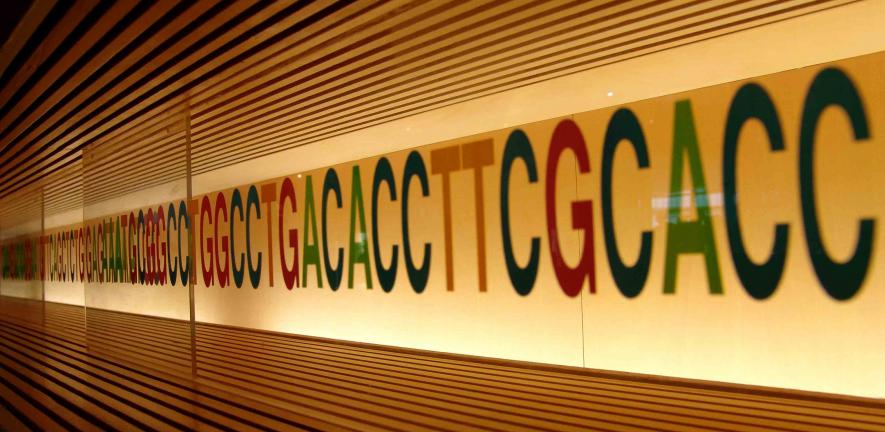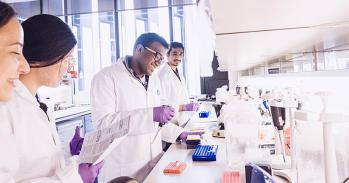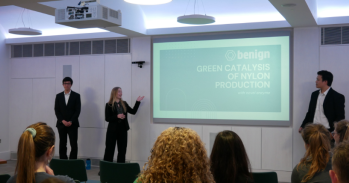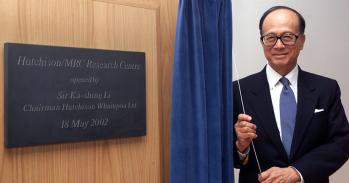
Dr Robin Hesketh, Senior Lecturer in the Department of Biochemistry and author of Betrayed by Nature, explains how advances in inexpensive, rapid gene sequencing and expression analysis is revolutionising cancer research and the development of new treatments.
Dr Robin Hesketh, Senior Lecturer in the Department of Biochemistry and author of Betrayed by Nature, explains how advances in inexpensive, rapid gene sequencing and expression analysis is revolutionising cancer research and the development of new treatments.
In 2003 it was a sensation. No really – it’s probably true that in medicine only the first human heart transplant operation back in 1967 has generated as much publicity. That was in the pre-web dark age but, nevertheless, the South African surgeon Christiaan Barnard was immortalized as a global hero: even the patient’s name was on everyone’s lips (Louis Washkansky if you’re struggling to recall) and you can re-live the whole event at the Groote Schuur Hospital museum in Capetown. But, although 2003 was just a decade ago, in today’s world sensations fade almost with the following dawn, whether they are pop groups or life-changing scientific advances.
So if now you mention “The Human Genome Project” to a man on the Clapham omnibus you are likely to elicit only a puzzled look. What happened in 2003 was of course that the genetic code – that is the sequence of bases in DNA – was revealed for the entire human genome. And an astonishing triumph it was, not least because, in contrast to almost everything else in history with a major British component, it was completed within schedule and under cost.
The feat was deservedly greeted with a fanfare of public interest unprecedented for any scientific project short of the early space missions. President Bush in the White House was hooked-up live to whoever was living in No. 10 at the time, the leading British scientists in this amazing project dropped in for tea and Mike Dexter, then Chairman of The Wellcome Trust and a restrained and conservative fellow – being a scientist – described it somewhat inelegantly as “… the outstanding achievement not only of our lifetime, but in terms of human history.”
However, even more remarkable is what happened next. The ensuing decade has brought technical advances so breathtaking as to almost overshadow the original human genome project itself. This quite staggering revolution has seen the introduction of fully automated, high throughput flow cells that simultaneously carry out hundreds of millions of separate sequencing reactions – just say that slowly. In the jargon it’s called ‘massively parallel sequencing’. The upshot of this stunning technology is that sequencing speed has gone up by 100 million times whilst, almost unbelievably, the cost has dropped by a factor of 10,000. Even computing science can’t match that progress!
One consequence of this incredible, though relatively unpublicised, revolution is that genomes can be now be sequenced on an industrial scale and in the years to come that is going to impact on every facet of mankind’s existence. Thus far the field of cancer has been the foremost recipient of this technological broadside with thousands of tumour genomes now sequenced. This has unveiled the almost incomprehensible panoply of genetic changes that cells can sustain and yet emerge still capable of proliferating. One of the first cancer genomes to be sequenced was that of a female who had died from leukemia. The work was carried out by The Genome Institute at Washington University in St. Louis, Missouri and since then, under its Director Richard Wilson, this group has continued to be a world leader in genomics and in particular in unravelling the extraordinary complexity of the group of cancers collectively called leukemias.
Wilson and his colleagues know, of course, that they are at the forefront of the most extraordinary transformation in medicine – because eventually it will affect everyone –though Rick Wilson himself is as improbable a revolutionary as you could imagine: a gentle, soft-spoken American, he’s what on this side of the pond would be called a thoroughly nice chap.
However, if they had any doubts about the direction in which their science was leading the world, these would have been dispelled when one of their own community, Lukas Wartman, was diagnosed with a very rare form of leukemia. This had first appeared ten years ago when Lukas was a student completing his medical degree at Washington University, and at that time it had been treated with chemotherapy and a bone-marrow transplant.
In the following years, Dr. Wartman had pursued his career goal of becoming a practicing oncologist specializing in leukemia until, in July 2011 the disease returned and he went into relapse. As his condition deteriorated rapidly and only one outcome seemed possible, those treating him turned in desperation from conventional approaches to local expertise. They applied genomic analysis to his cancer cells. From the vast number of disruptions identified, one in particular stood out: an abnormally expressed gene that had previously been associated with other types of leukemia but is very rare in the form Wartman had developed.
By an unlikely chance there is a drug available that can knockout the activity of the protein made by that gene. Its effect was phenomenal, restoring the normal blood count and achieving complete remission. This wonderful outcome does not mean that Dr. Wartman is cured for life – but for now he is alive and well – and a co-author of the group’s latest paper – on leukemia.
He had been a desperately unlucky in that the genetic roulette that is life generated in him a hand of mutations that drove the development of a rare and almost invariably lethal form of leukemia. But life also smiled on Lukas Wartman in that circumstances found him at the heart of the genomics revolution that is ushering in a new world of medicine. His isn’t the first life to be saved through the use of this fabulous technology but he is one of the first few who will, in years to come, be followed by many as these marvellous methods for diagnosis and the design of treatment come into widespread use.
This work is licensed under a Creative Commons Licence. If you use this content on your site please link back to this page.





